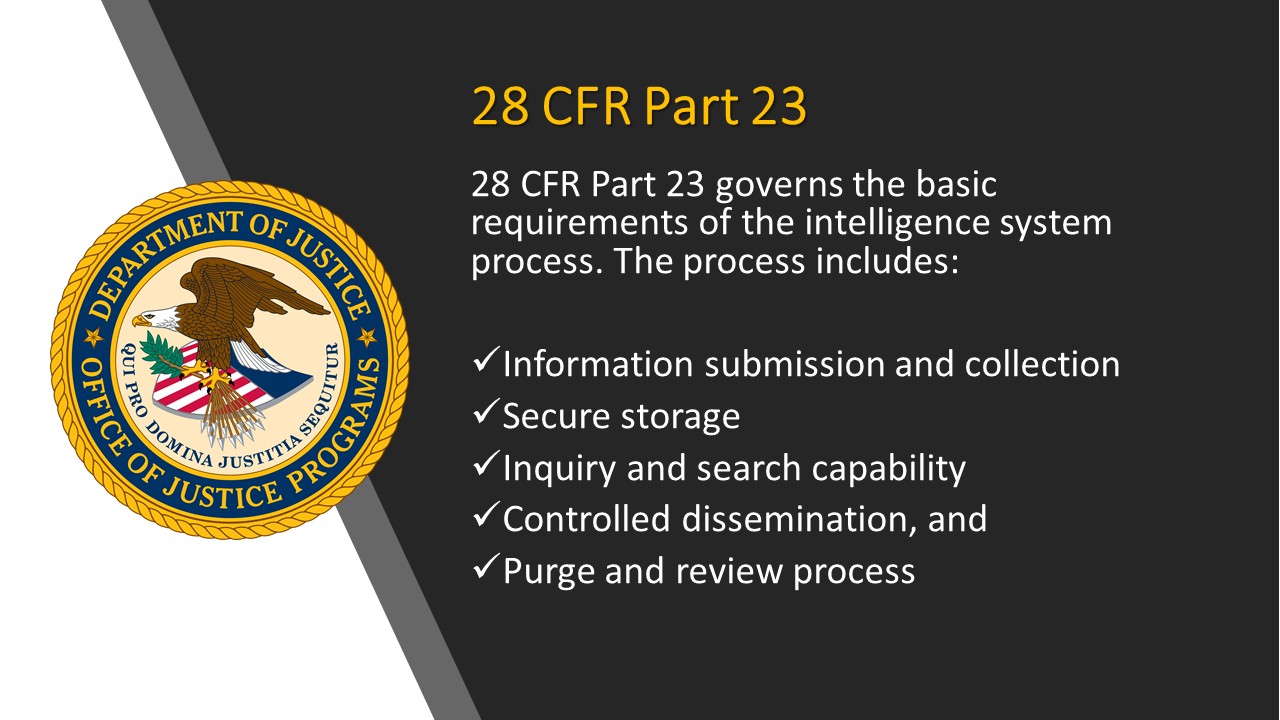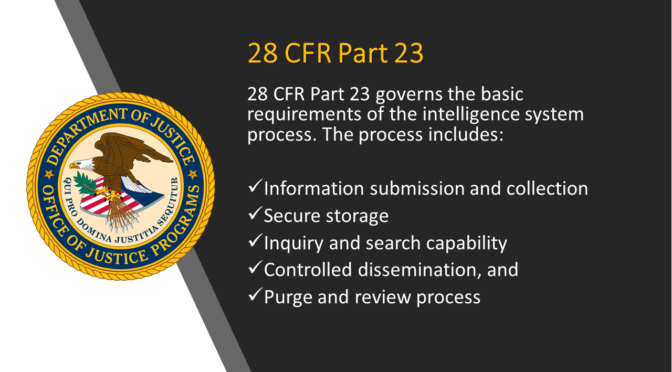The backbone of any functioning criminal intelligence unit is the strength of its intel files and/or gang records. Best practices for gang intelligence suggests that agencies should regularly update and contribute gang intelligence to a specialized gang intelligence system (aka gang database). These intelligence systems can manage and store thousands or millions of records of gangs, their activities, and their members.
With gang intelligence software, authorized users may read and update specific files, search and retrieve photos/videos/audio, and generally utilize the solution to assist investigation efforts. An example of some attributes stored within a gang intelligence system are:
- Activities

- Locations
- Names
- Vehicles
- Addresses
- Tattoos
- Marks and Scars
- Incidents
- Reports
- Tips
- Aliases
Properly utilized, the gang intelligence system should allow the collection, analysis, storage and retrieval of data that qualifies as criminal intelligence. The data should only be disseminated to agency members with a specific need, and that need should be logged as part of the dissemination.
Gang Intelligence Integrity
With a gang intelligence database, agencies must preserve the integrity of the system through security and access restriction from unauthorized users – internal and external – because of constitutional protection for individuals whose personal information is contained within the system.
Importantly, for gang intelligence, a rigid purging process must be adhered to as this ensures the integrity and credibility of the data. If, for example, a record has not been reviewed or appended for a period of five years, best practices suggest that the record be purged.
Access governance is also critical to gang intelligence systems to ensure integrity of the data entered and maintained and, importantly, to comply with applicable regional, state, and federal laws.
Gang / Criminal Intelligence and U.S. Law
 The United States Constitution prohibits the criminalization of mere membership in a gang (or other similar organization). There is nothing illegal about being a gang member, according to our country’s laws. However, it is perfectly legal for agencies to add gang members to the database even if no crime has been committed by that member.
The United States Constitution prohibits the criminalization of mere membership in a gang (or other similar organization). There is nothing illegal about being a gang member, according to our country’s laws. However, it is perfectly legal for agencies to add gang members to the database even if no crime has been committed by that member.
The tracking and storage of this data is widely criticized, however. Opponents suggest that agencies are profiling or targeting groups that are not engaged in criminal activities, and/or installing a ‘guilt by association’ mentality by tracking those members.
Conversely, advocates of gang intelligence database systems know that law enforcement has a legitimate interest in monitoring the individuals and groups engaged in ‘group criminal behavior’.
The back-and-forth between sides creates tension between the rights of society to be protected by law enforcement, and the individual privacy expectations of gang members.
CFR 28 Part 23
The result of these competing interests is something called Code of Federal Regulations, Title 28, Part 23 (CFR 28 Part 23) which details the requirements for gathering, entering, storing, and disseminating information about individuals and organizations (gangs) into an intelligence system.
 28 CFR Part 23 was designed as a regulation specific to multi-jurisdictional intelligence systems that have received federal grant funds for the development or purchase of the gang database. It is, however, an excellent guide for individual agencies, as the regulation attempts to fairly balance the intelligence needs of law enforcement against individual privacy requirements. In other words, it helps agencies get their jobs done without violating individual rights.
28 CFR Part 23 was designed as a regulation specific to multi-jurisdictional intelligence systems that have received federal grant funds for the development or purchase of the gang database. It is, however, an excellent guide for individual agencies, as the regulation attempts to fairly balance the intelligence needs of law enforcement against individual privacy requirements. In other words, it helps agencies get their jobs done without violating individual rights.
Compliance with 28 CFR Part 23 in Gang Intelligence
Gang and criminal intelligence data is defined within 28 CFR Part 23 as “data which has been evaluated to determine that:
A) it is relevant to the identification of, and the criminal activity engaged in by, an individual who – or an organization which – is reasonably suspected of involvement in criminal activity, and
B) meets criminal intelligence system submission criteria”
The ‘submission criteria’ is essentially the basis for something to be entered into the gang intelligence system. The criteria include the following:
- A reasonable suspicion that an individual is relevant to the criminal activity
- Prospective information to be entered is relevant to the criminal activity
- Information does not include data related to political, religious, or social views unless that information related directly to the criminal activity that formed the basis for focus on the gang or group
- Information was not obtained in violation of any federal, state, or local law or ordinance
- Information establishes sufficient facts to give trained law enforcement officials a basis to believe that an individual or gang/organization is involved in a definable criminal activity

As referenced above, 28 CFR Part 23 also indicates that information contained within a compliant database or criminal intelligence system must be reviewed and evaluated for relevance and importance every five years. Data that is deemed to be irrelevant and unimportant should be purged from the system. This is true even if the data is discovered to be noncompliant before five years.
Perhaps the most important element of a gang database system complying with 28 CFR Part 23 is that no information whatsoever from the database should be disseminated without a legitimate law enforcement reason, such as criminal investigation cases and charges being filed against a suspect.
Conclusion
If managing a gang intelligence system seems intimidating, it ought not be. If an agency desires to comply with 28 CFR Part 23, the rules for managing such as system are clearly spelled out. If an agency simply wants to collect and manage data outside of the federal guidelines – and has not accepted federal grant monies for such a program – they are free to do so as long as the system meets the security and ‘common sense’ guidelines that protect an individual’s right to privacy.
About the Author
Tyler Wood is Operations Director of Austin, TX based Crime Tech Solutions (www.crimetechsolutions.com). The company develops and deploys low price / high performance software for law enforcement including Case Closed™ investigative case management software, sophisticated Sentinel Visualizer™ link analysis and data visualization software, and CrimeMap Pro™ advanced crime analytics. The company also develops the popular GangBuster™ gang database, and IntelNexus™ criminal intelligence software for 28 CFR Part 23 compliance.
